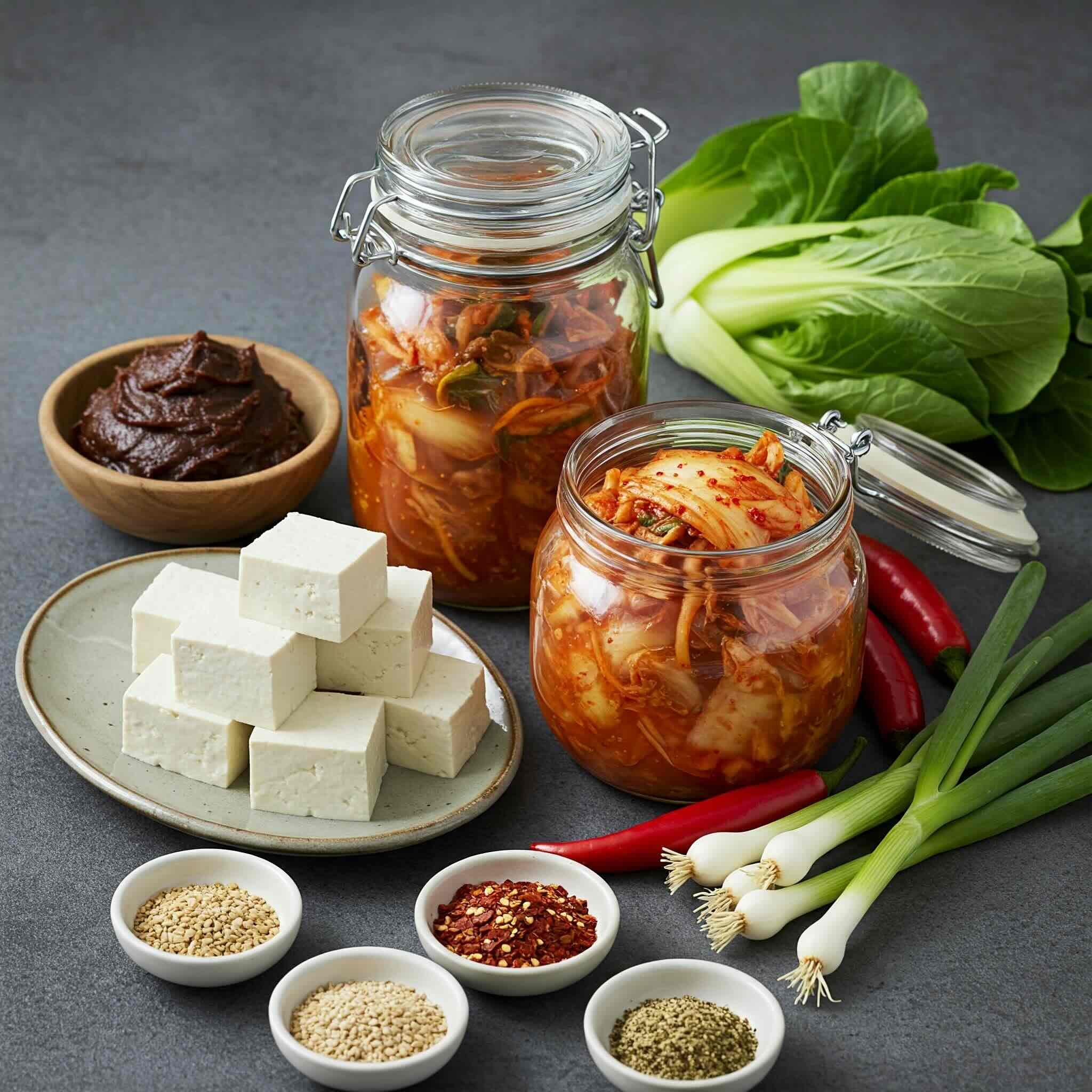The Magic of Fermented Ingredients in Plant-Based Cooking
The Magic of Fermented Ingredients – Why Miso, Sufu, and Kimchi Make Everything Taste Better 🦠
Fermentation is one of the oldest culinary secrets in the world, transforming simple ingredients into deeply complex, umami-rich powerhouses. In plant-based cooking, fermented foods are essential—they add depth, tang, richness, and an irresistible savoury quality to any dish.
But how does fermentation work? And why are ingredients like miso, sufu, and kimchi absolute game-changers in plant-based meals? Let’s dive into the science of fermentation and discover how to use these flavour-packed ingredients like a pro. 🚀
🦠 What is Fermentation, and Why Does It Enhance Flavour?
Fermentation is a natural process where bacteria, yeasts, or fungi break down sugars and starches into flavour-packed compounds like organic acids, alcohols, and glutamates.
🔥 How Fermentation Enhances Flavour:
✔ Boosts Umami – Fermentation increases natural glutamates, making food deeply savoury.
✔ Adds Tangy Complexity – Fermented foods develop sour, funky, and rich notes that balance sweetness and saltiness.
✔ Improves Texture – Some fermented foods become creamy, chewy, or pleasantly crisp.
✔ Preserves Food – Many fermented foods were originally created to extend shelf life without refrigeration.
Now, let’s explore three fermented flavour powerhouses—miso, sufu, and kimchi—and how they can transform your plant-based cooking! 🍽️
🍜 Miso: The Umami Paste That Elevates Everything
What It Is: A traditional Japanese fermented soybean paste made with koji mould, salt, and soybeans (or other grains like barley or rice).
Flavour Profile: Deeply savoury, slightly salty, with sweet or earthy undertones depending on the variety.
✅ How to Use Miso for Maximum Flavour:
Soups & Broths: Stir miso into hot (but not boiling) water for an instant umami boost.
Marinades & Dressings: Mix with vinegar, garlic, and sesame oil for a flavour-packed sauce.
Plant-Based Cheese: Blend miso with cashews or tofu for a creamy, tangy “cheese.”
Glazes & Stir-Fries: Combine with maple syrup or soy sauce for a sweet-savory caramelised finish.
🔥 Pro Tip: Light miso (shiro) is mild and slightly sweet, while dark miso (aka) is intense and deeply savoury—choose based on your dish!
🧈 Sufu: The Fermented Tofu You Need to Try
What It Is: A fermented and aged tofu popular in Chinese cuisine, often called “fermented bean curd” or “Chinese cheese.”
Flavour Profile: Creamy, salty, and intensely umami, with funky and slightly cheesy notes.
✅ How to Use Sufu in Plant-Based Cooking:
Vegan Butter Substitute: Mash sufu with a little oil and spread over toast or steamed veggies.
Sauces & Dressings: Mix into stir-fry sauces for extra depth.
Broth Enhancer: Dissolve a small cube into soup to create an instant umami boost.
Dips & Spreads: Blend with tahini, lemon juice, and garlic for a rich, cheesy dip.
🔥 Pro Tip: Sufu is salty! Start with a small amount and adjust to taste.
🌶️ Kimchi: The Bold, Fermented Superstar
What It Is: A spicy, fermented Korean cabbage dish made with garlic, ginger, chilli, and salt, aged to develop deep umami and tangy heat.
Flavour Profile: Spicy, tangy, umami-packed, with a satisfying crunch.
✅ How to Use Kimchi for Extra Depth:
Topping for Grain Bowls & Noodles: Adds crunch and punchy umami to any meal.
Kimchi Fried Rice: Mix with tofu, rice, and sesame oil for a quick, flavour-packed dish.
Savoury Pancakes & Dumplings: Fold into batter or stuffing for extra zing.
Kimchi Stews & Soups: Adds layers of depth to broth-based dishes.
🔥 Pro Tip: Older kimchi is more sour and intense—use fresh kimchi for crunch and aged kimchi for stews!
🌍 How Fermented Foods Are Used Around the World
Fermentation is a universal technique—almost every culture has a signature fermented food!
Japan – Miso, soy sauce, natto (fermented soybeans)
China – Sufu, fermented black beans, pickled mustard greens
Korea – Kimchi, doenjang (fermented soybean paste), gochujang (fermented chilli paste)
Europe – Sauerkraut, sourdough, tempeh (originally from Indonesia but now widely used)
Africa – Injera (fermented teff flatbread), garri (fermented cassava)
South America – Chicha (fermented maize drink), curtido (fermented cabbage slaw)
🔥 Lesson: By borrowing from global fermentation traditions, you can create plant-based meals that are bold, flavourful, and deeply satisfying.
🍽️ How to Start Using Fermented Ingredients Today
✅ Balance with Sweet & Savoury – Fermented foods can be intense! Pair with sweet or mild ingredients like roasted vegetables, coconut milk, or grains.
✅ Start Small – A little miso or sufu goes a long way—taste and adjust gradually.
✅ Mix & Match – Layer fermented ingredients together for depth (e.g., miso + kimchi for a flavour explosion).
✅ Use Fermentation as a Seasoning – Think of fermented foods like salt or spice—a little adds huge impact.
🌟 Final Takeaway: Fermentation is a Game-Changer
Fermented ingredients aren’t just for probiotics—they are an essential tool for making plant-based food richer, deeper, and more satisfying. Whether it’s miso’s umami punch, sufu’s creamy saltiness, or kimchi’s fiery depth, these fermented wonders can elevate any dish.
Start experimenting with these bold, umami-rich ingredients, and watch your plant-based cooking transform! 🚀

